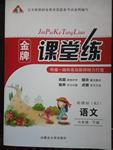题目内容
When Gretchen Baxter gets home from work as a New York City book editor, she checks her Blackberry (黑莓手机) at the door. ‘I think we are attached to these devices in a way that is not always positive,’ says Baxter,who’d rather focus at home on her husband and 12-year-old daughter. ‘It’s there and it beckons (召唤). That’s human nature (but)…we kind of get crazy sometimes and we don’t know where it should stop.’
Americans are connected at unprecedented (前所未有的) levels一93% now use cell phones or wireless devices;one third of those are ‘smart phones’ that allow users to browse the Web and check e-mail,among other things. The benefits are obvious: checking messages on the road,staying in touch with friends and family,efficiently using time once spent waiting around. The downside:often,we’re effectively disconnecting from those in the same room.
That's why,despite all the technology that makes communicating easier than ever,2010 was the Year We Stopped Talking to One Another. From texting at dinner to posting on Facebook from work or checking e-mail while on a date,the connectivity revolution is creating a lot of divided attention,not to mention social anxiety. Many analysts say it's time to step back and reassess.
‘What we’re going to see in the future is new opportunities for people to be plugged in and connected like never before,’ says Scott Campbell. ‘It can be a good thing,but I also see new ways the traditional social fabric (社会结构) is getting somewhat torn apart.’
Our days are filled with beeps and pings·----many of which pull us away from tasks at hand or face-to-face conversations. We may feel that the distractions are too much,but we can’t seem to stop posting,texting or surfing.
‘We're going through a period of adjustment and rebalancing,’ says Sherry Turkle and she wants to remind people that technology can be turned off.
‘Our human purposes are to really have connections with people,’ she says. ‘We have to reclaim it. It’s not going to take place by itself.’
【小题1】What can be the best title for the passage?
| A.2010: The year technology developed quickly. |
| B.2010: The year technology sped up our life pace. |
| C.2010: The year technology replaced talking. |
| D.2010: The year technology made communicating easier. |
| A.the new technology always influences people’s life in a positive way |
| B.the new technology is so tempting that she could even put her daughter and husband behind |
| C.it is encouraging to see progress on the new technology every year |
| D.people are too dependent on the new technology to let go |
| A.The wide use of mobile devices has nothing to do with the ‘traditional social fabric’. |
| B.Mobile devices play a less important part in American life. |
| C.Mobile devices create a lot of divided attention and social anxiety. |
| D.Many analysts speak highly of the wide popularity of mobile devices. |
| A.Something must be done to get connection with people in reality again· |
| B.Using mobile services can help people get connection with each other. |
| C.Mobile services have a strong impact on people’s life. |
| D.The connection with people can happen naturally. |
【小题1】C
【小题1】D
【小题1】C
【小题1】A
解析

 金牌课堂练系列答案
金牌课堂练系列答案 三新快车金牌周周练系列答案
三新快车金牌周周练系列答案